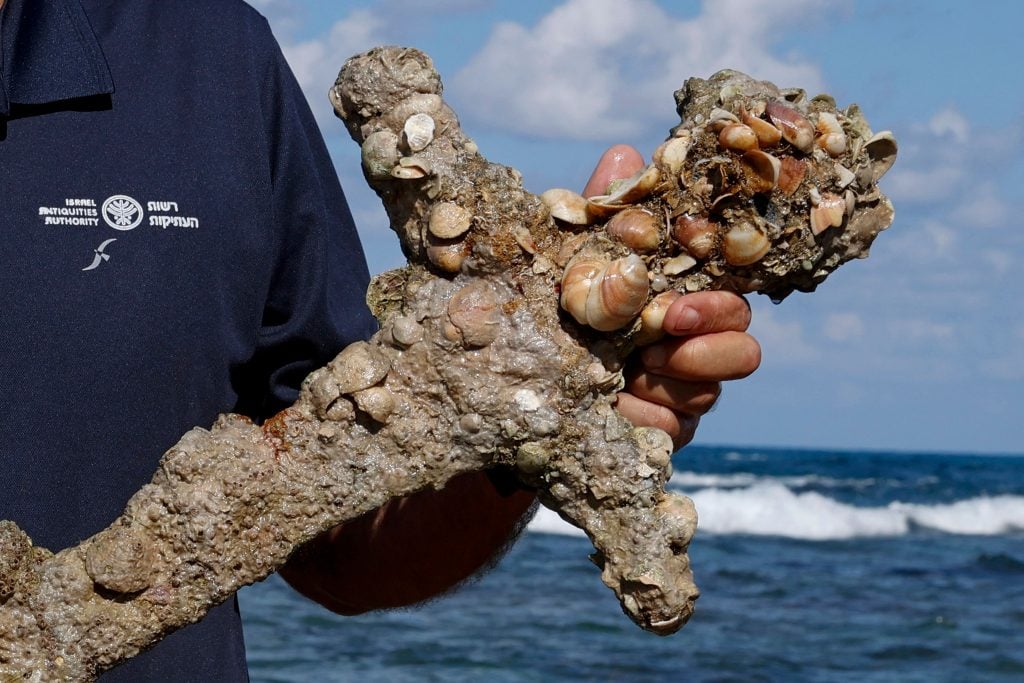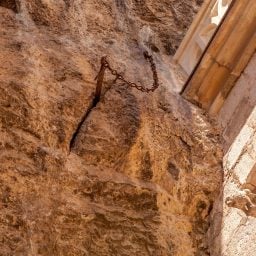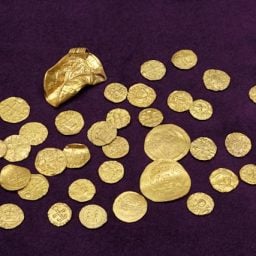A scuba diver made an amazing discovery of a 900-year-old iron sword, which archaeologists believe belonged to a crusader knight, while diving near his local beach off Israel’s Carmel coast.
Shlomi Katzin discovered a range of treasures from the era of the crusades (1095-1291) including stone and metal anchors, fragments of pottery and the shellfish-encrusted sword which he brought ashore and turned in to the Israeli Antiquities Authority (IAA). It is thought that underwater currents shifted the sands around the 1,000-square-foot area where the objects were found.
“The discovery of ancient finds by swimmers and leisure divers is a growing phenomenon in recent years, with the increasing popularity of such sports,” said Yaakov Sharvit of the IAA.
The sword itself, 1 meter in length with a 30-centimeter hilt, was discovered caked in centuries of sand, shells and underwater detritus which meant it was uniquely well preserved.
“The sword, which was kept in perfect condition, is a beautiful and rare find, and it seems to belong to a crusader knight,” said Nir Distalfeld, supervisor of the IAA robbery prevention unit, in a statement issued by the Israel Ministry of Foreign Affairs. “It was found covered in a marine bracelet, but it seems to be made of iron. It’s exciting to encounter such a personal object, that takes you in your imagination 900 years back in time, to another period, of knights, armors and swords.”
From the 11th to the 13th century, militant European missionaries travelled to the Middle East in an effort to forcibly convert Muslim countries to Christianity. The series of wars fought over control of the Holy Land is known as the crusades.
The discovery has excited archaeologists as this area of the Carmel coast near the city of Haifa is well sheltered and has provided safe anchorage for many ships over the centuries, from the crusades up to the present day.
“Every ancient artifact that is found helps us piece together the historical puzzle of the Land of Israel. Once the sword has been cleaned and researched in the Israel Antiquities Authority’s laboratories, we will ensure it is displayed to the public,” said Eli Escosido of the IAA.








